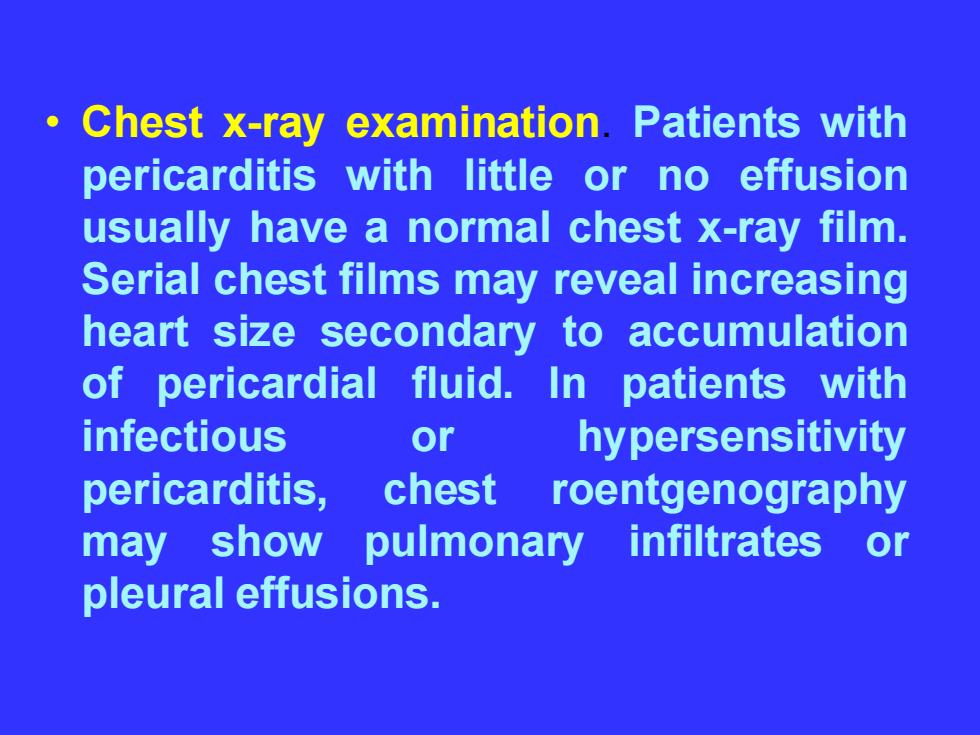
Chest x-ray examination.Patients with pericarditis with little or no effusion usually have a normal chest x-ray film. Serial chest films may reveal increasing heart size secondary to accumulation of pericardial fluid.In patients with infectious or hypersensitivity pericarditis, chest roentgenography may show pulmonary infiltrates or pleural effusions
• Chest x-ray examination. Patients with pericarditis with little or no effusion usually have a normal chest x-ray film. Serial chest films may reveal increasing heart size secondary to accumulation of pericardial fluid. In patients with infectious or hypersensitivity pericarditis, chest roentgenography may show pulmonary infiltrates or pleural effusions
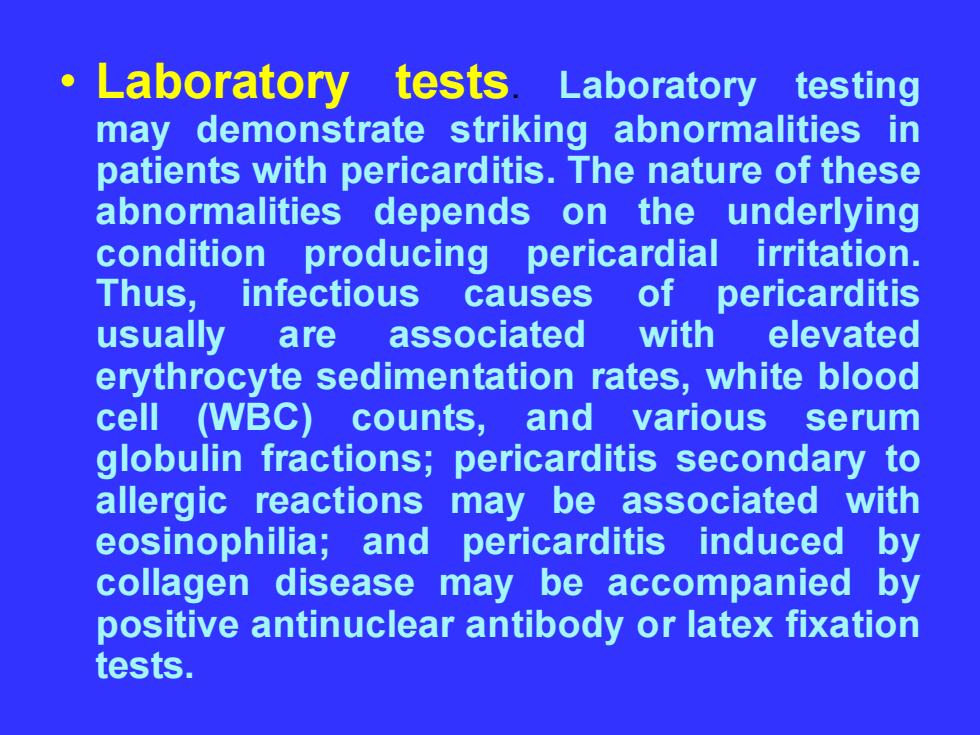
Laboratory tests.Laboratory testing may demonstrate striking abnormalities in patients with pericarditis.The nature of these abnormalities depends on the underlying condition producing pericardial irritation. Thus,infectious causes of pericarditis usually are associated with elevated erythrocyte sedimentation rates,white blood cell (WBC)counts,and various serum globulin fractions;pericarditis secondary to allergic reactions may be associated with eosinophilia;and pericarditis induced by collagen disease may be accompanied by positive antinuclear antibody or latex fixation tests
• Laboratory tests. Laboratory testing may demonstrate striking abnormalities in patients with pericarditis. The nature of these abnormalities depends on the underlying condition producing pericardial irritation. Thus, infectious causes of pericarditis usually are associated with elevated erythrocyte sedimentation rates, white blood cell (WBC) counts, and various serum globulin fractions; pericarditis secondary to allergic reactions may be associated with eosinophilia; and pericarditis induced by collagen disease may be accompanied by positive antinuclear antibody or latex fixation tests
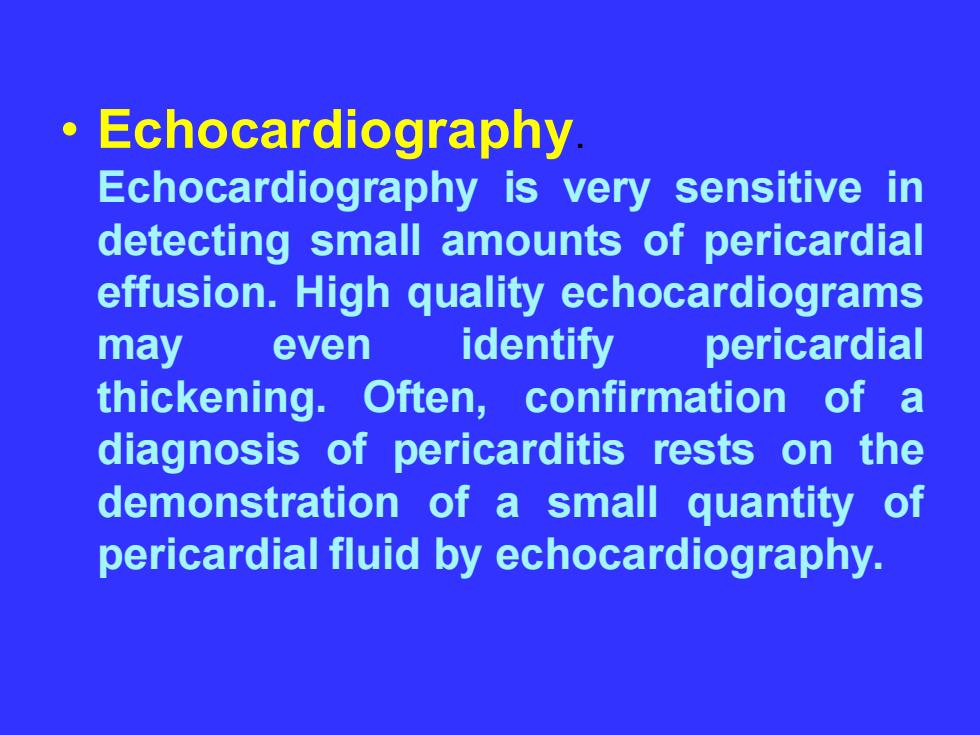
Echocardiography Echocardiography is very sensitive in detecting small amounts of pericardial effusion.High quality echocardiograms may even identify pericardial thickening.Often,confirmation of a diagnosis of pericarditis rests on the demonstration of a small quantity of pericardial fluid by echocardiography
• Echocardiography. Echocardiography is very sensitive in detecting small amounts of pericardial effusion. High quality echocardiograms may even identify pericardial thickening. Often, confirmation of a diagnosis of pericarditis rests on the demonstration of a small quantity of pericardial fluid by echocardiography
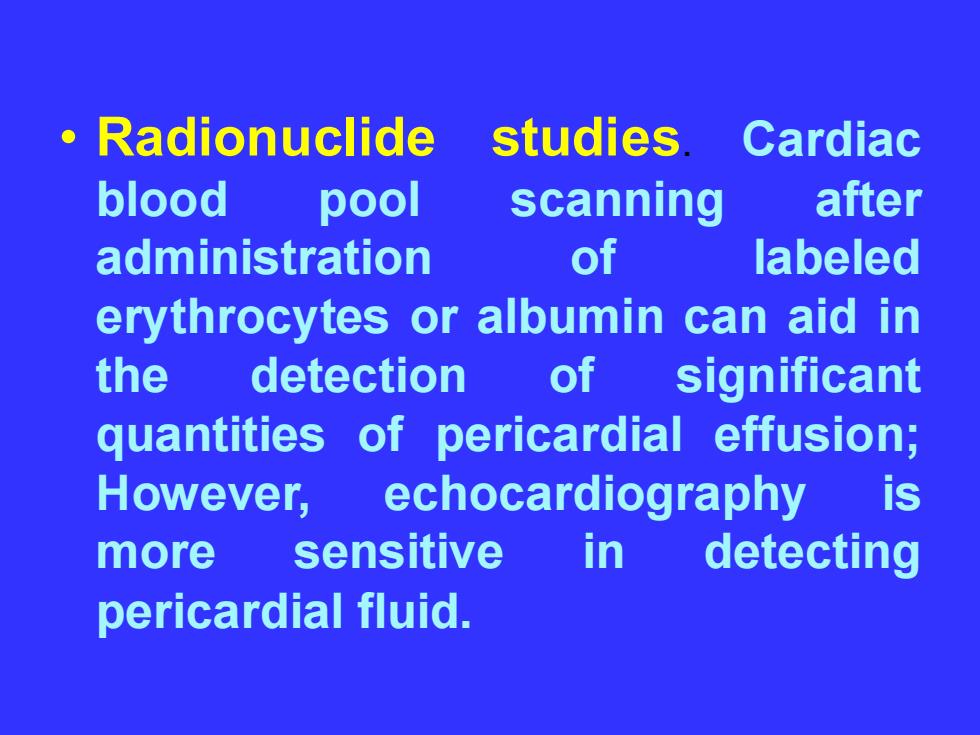
Radionuclide studies Cardiac blood pool scanning after administration of labeled erythrocytes or albumin can aid in the detection of significant quantities of pericardial effusion; However, echocardiography is more sensitive in detecting pericardial fluid
• Radionuclide studies. Cardiac blood pool scanning after administration of labeled erythrocytes or albumin can aid in the detection of significant quantities of pericardial effusion; However, echocardiography is more sensitive in detecting pericardial fluid
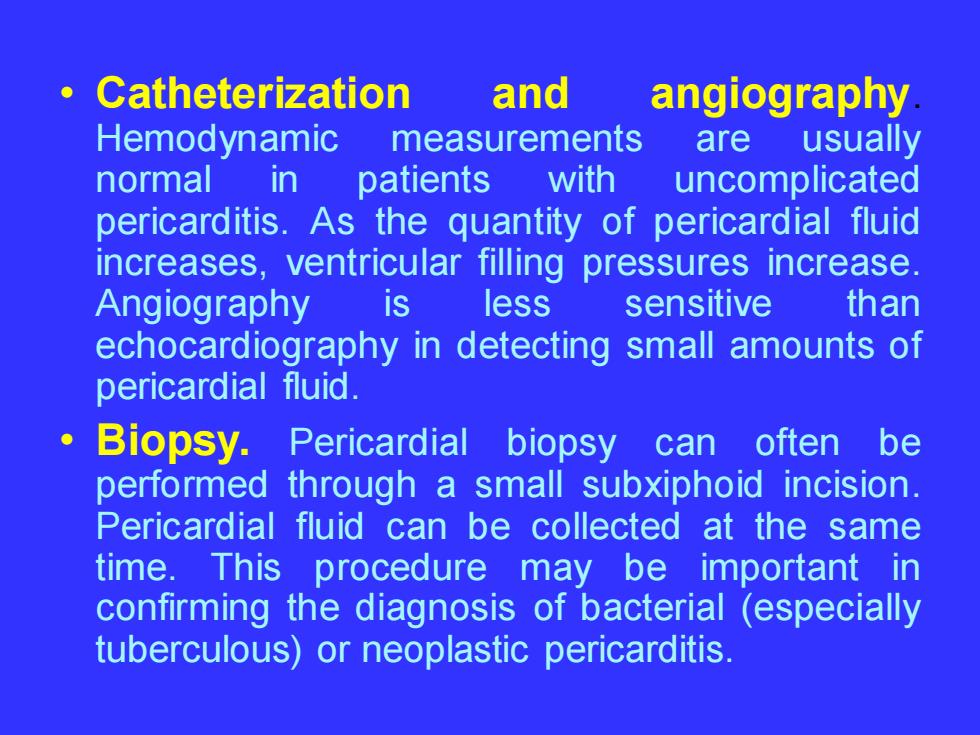
Catheterization and angiography Hemodynamic measurements are usually normal in patients with uncomplicated pericarditis.As the quantity of pericardial fluid increases,ventricular filling pressures increase. Angiography is less sensitive than echocardiography in detecting small amounts of pericardial fluid. Biopsy.Pericardial biopsy can often be performed through a small subxiphoid incision. Pericardial fluid can be collected at the same time.This procedure may be important in confirming the diagnosis of bacterial (especially tuberculous)or neoplastic pericarditis
• Catheterization and angiography. Hemodynamic measurements are usually normal in patients with uncomplicated pericarditis. As the quantity of pericardial fluid increases, ventricular filling pressures increase. Angiography is less sensitive than echocardiography in detecting small amounts of pericardial fluid. • Biopsy. Pericardial biopsy can often be performed through a small subxiphoid incision. Pericardial fluid can be collected at the same time. This procedure may be important in confirming the diagnosis of bacterial (especially tuberculous) or neoplastic pericarditis